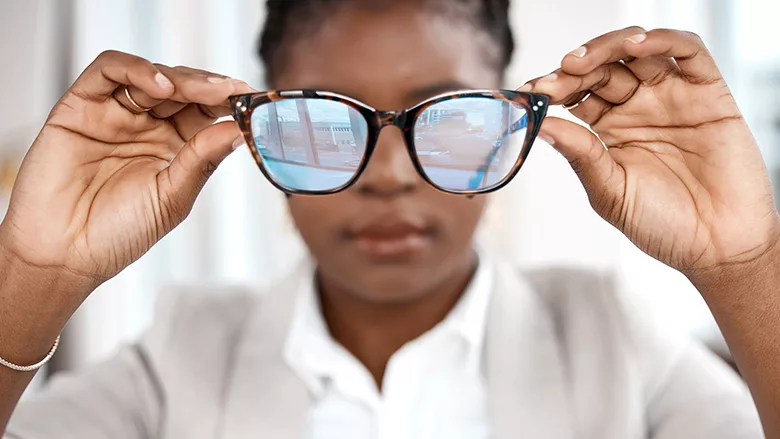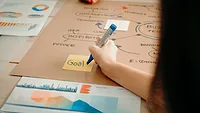A Fresh Look at Your Restoration Business

Photo credit: PeopleImages/iStock / Getty Images Plus via Getty Images
As a frequent flyer it is easy for me to arrive at an airport, plug in my headphones, and do my best to disconnect from the mind-numbing busyness going on around me. But this flight was different.
While waiting for a flight from Chicago, IL to Canton, OH, I noticed an older lady being dropped off near the gate via a wheelchair and left to sit alone. As the call to board began, I could tell she was struggling to find her way to the plane. I removed my headphones and offered to help her to the gate. She told me she was blind, took my arm, and together we slowly made our way.
Also in our July issue:
After connecting her with the gate agent, I walked down the jet bridge and found my seat on the plane, 9A. After a few minutes, 9B slowly walked down the aisle, sat down next to me, and said, “Hi! I’m Caroline.” (You guessed it! Caroline was the lady I had helped to the gate.)
For the next hour and a half, I had the chance to learn a little bit about Ms. Caroline and a whole lot more about my perspective on life.
I found out that Ms. Caroline had started her day 21 hours earlier in Athens … yep, Greece! Athens to Frankfurt, Germany to Chicago, and finally, on her way home to Canton. She was still going strong! I learned that Caroline is 87 years old and a frequent traveler—at the time of our meeting she had four more trips already booked. She has a degree in chemistry, is the widow of two loving marriages, and has been blind a majority of her life. On top of too many trips to keep track of, Caroline has visited EVERY national park, walked through the Vatican, and had just toured Greece.
After taking a few moments to gather my thoughts, I tried to find the words to respectfully ask, “What does a national park or museum hold for you if you can’t see it?” With the knowing smile of someone who had been asked this question before, she told me about how it felt to just be in the presence of history ... to be near the grand … to be surrounded by beauty. Yes, she misses out on one sensory perception of the places she visits, but there are other ways to experience them. She told me there is something to how a place feels. She described the sound her steps make beneath her as she walks. She talked about the smell that the years have left imprinted on places. I was admittedly a little taken back by how simple and yet profound her answer was.
Our conversation got me thinking—what if, instead of museums or landscapes, we took the same approach to look at other areas in our lives? Like our home, our relationships, or perhaps even take a look inside the place where we do our work.
What is the story Ms. Caroline would tell me if I invited her to spend a day around your company? How would it feel? What would she hear? I would like to challenge you to go beyond just LOOKING at your business and pay attention with more than your eyes. I can guarantee that there is more going on than what you can see.
What is the feel of your place?
Ms. Caroline told me of how, when she walked around some museums, the staff would open displays and allow her to touch historical items—to see with her hands. Picture the mass and chill of a suit of armor or the shape and composition of a sculpture.
What would she learn by touch if she took a tour at your place of business? An office that is organized and free of clutter, a clean and tidy warehouse with everything in its place, trucks that are prepped and ready for the next job? Now think outside your office and about one of your current projects. Equipment set in the proper manner, a clean job site that shows respect for the customer’s property, workers with the correct tools and gear to complete the job right? The differences between the good and the really great companies can be seen in these “touch points” as you look at how the work is being done.
Feel has another meaning when you consider the atmosphere or environment of a place. Ms. Caroline described how being near something grand could be felt at a more base or subconscious level. How would she perceive a day spent in the places you do your work?
From my experience, I believe you can feel a proactive, at-the-ready culture versus one that is simply reacting to the events of the day. You can feel an organization built on employee trust and empowerment. Of course, this means the opposite is true as well. A reactive, rushed, broken, or ultra-competitive culture can reverberate through a company from how the employees work (or don’t work) with each other straight through to financial performance. The challenge for you is to be perceptive enough to pick up on the intangible, honest enough to look objectively at the picture, and strong enough to keep going or to change as required to receive the desired results.
What does it sound like around your place?
During my conversation with Ms. Caroline, she described how her footsteps bounced off floors and walls and how voices carried down ancient corridors. What would she learn about you if she listened to the sounds coming out of your office or on one of your job sites? Words of commitment and support, of employees having each other’s best interests at heart? Words of collaboration and your staff coming together to figure things out? Or would it be the opposite?
I know there is a common saying about sticks and stones but, in reality, the words we choose to say to each other hold more power than we may first think. Words that lift up can build. Words that are harsh can tear down. The words you choose can set a path for a colleague to achieve inspired results or send them into a spiral of self-doubt that is difficult to rebound from. Be careful with words you use and pay attention to how they are being received. I am not saying that you cannot hold people accountable for their actions, but I would be mindful of the delivery of the message more than the subject matter of the message itself. What do you say about the new guy in the office or the old timer who is a year from retirement? How do your coworkers hear you talk about your customers, as challenging as they may be at times?
Since Ms. Caroline depended on the way a place sounded to paint her mind’s picture, she also became an excellent listener. She closed her mouth and opened her ears, paying attention to the small details to get an accurate view of what was going on around her.
How well do we listen? Too often, I feel like I listen only to put together my response or listen with only half of my attention. Given the opportunity to look away from that all-important email or to listen with the full me, I wonder how much greater my understanding of what was being said around me would be.
What I had planned for my short plane ride across the Midwest was to listen to a few tunes, read a little, and prepare for the week ahead. What I got instead was a reality check on how I interact with what is going on around me. Too often, I look with only my eyes and trick myself into thinking I have the whole picture. I’m not sure if she knew it, but there is a sneaking little suspicion that she did. My quick conversation with Ms. Caroline challenged me to stop leaning on my eyes alone—to pay attention to how it feels, listen for what it sounds like, and put together the WHOLE picture. Now, I challenge you to do the same. You may be surprised by what you see.
Looking for a reprint of this article?
From high-res PDFs to custom plaques, order your copy today!








